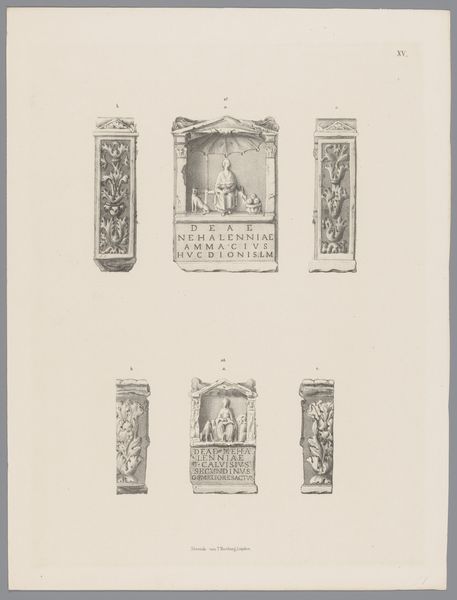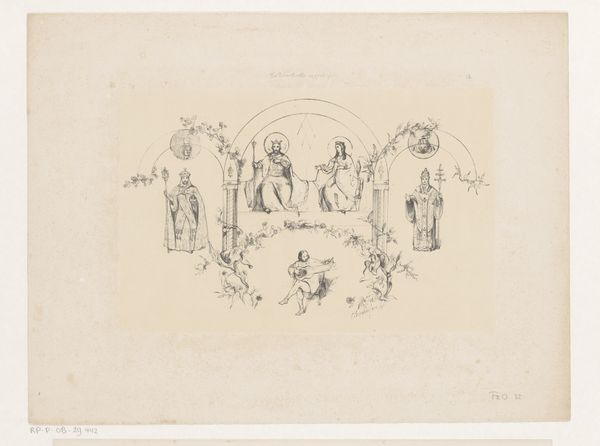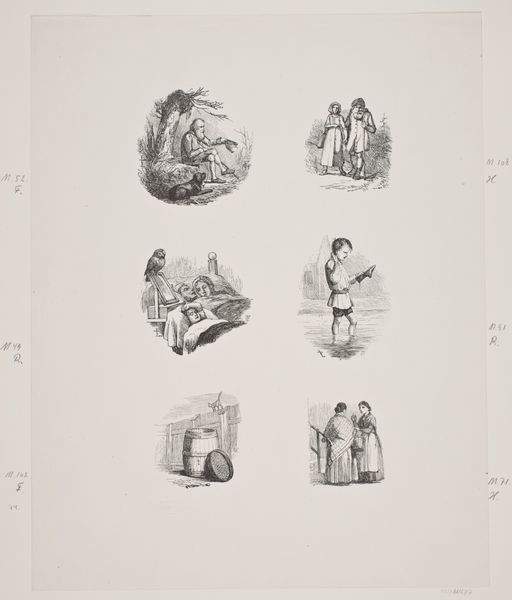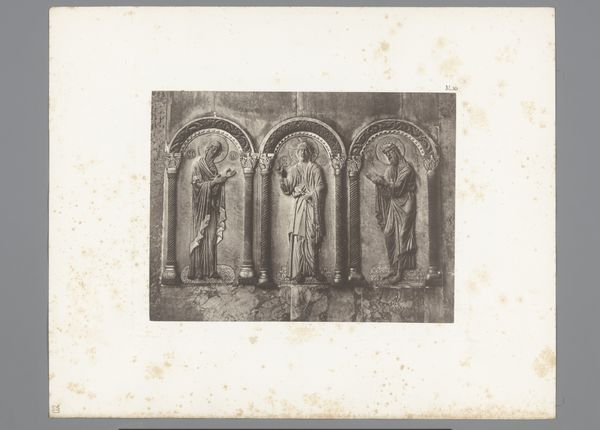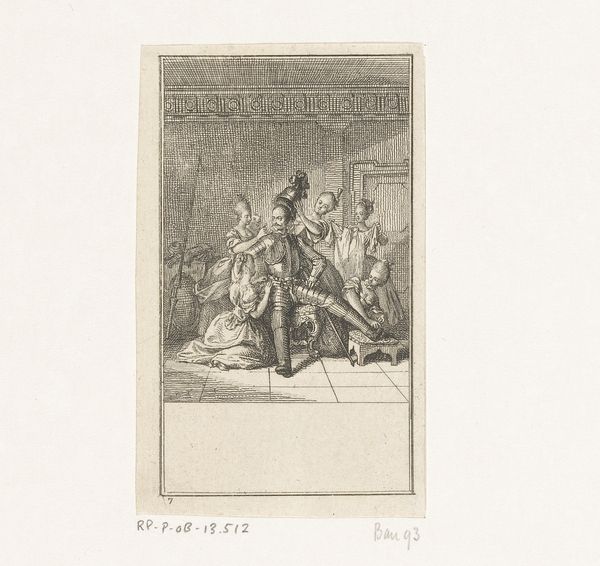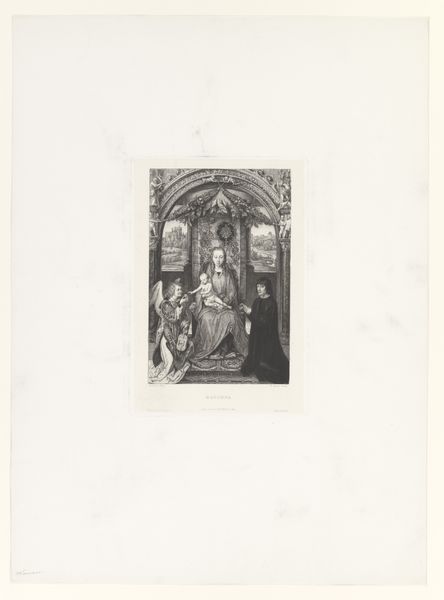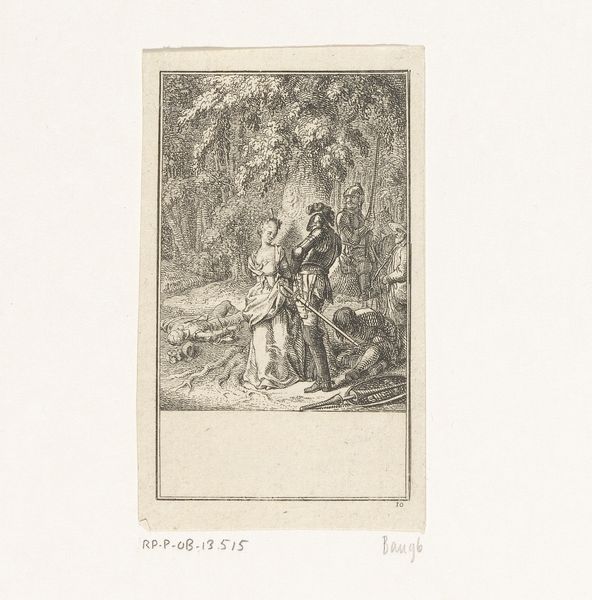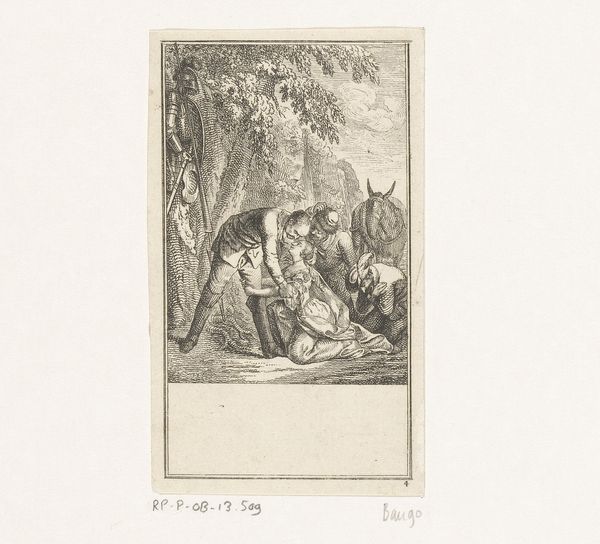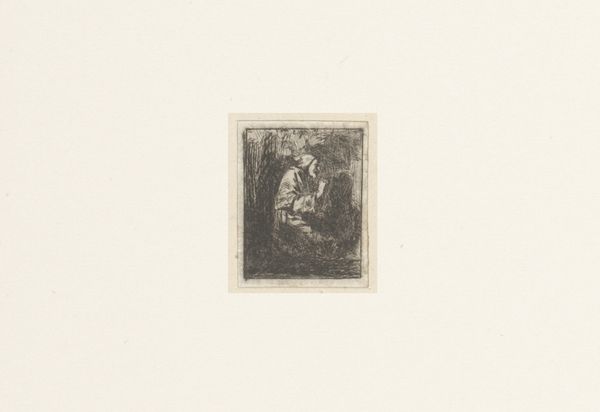
drawing, print, etching, engraving
#
drawing
#
aged paper
# print
#
etching
#
old engraving style
#
white palette
#
mannerism
#
figuration
#
nude
#
engraving
Dimensions: height 53 mm, width 80 mm
Copyright: Rijks Museum: Open Domain
Curator: This engraving, made by Etienne Delaune in 1578, is entitled "Three Niches, one with Pandora, two with Venus." The piece is on display here at the Rijksmuseum. Editor: The aged paper gives this such a stark feel; the lines, though delicate, feel quite unforgiving and present each figure with surprising candor. Curator: As an engraving, the lines you're noticing come directly from the artist's hand and the careful control required to incise those lines into a metal plate. Think of the labour involved! And how prints like these allowed for widespread distribution of classical imagery and ideals. What do you make of the placement of Pandora next to two depictions of Venus? Editor: The placement feels pointed; an almost cautionary tale about the feminine and its potential for both great beauty, represented by Venus, and disastrous chaos through Pandora opening her infamous box. Pandora as the "first woman", burdened with the troubles released, set against Venus, idealized beauty objectified. Curator: Exactly. Considering the context of the time, with increasing anxiety about female agency during the Reformation, seeing Pandora alongside Venus can tell us something about how women's roles were being conceived and portrayed. The labor that went into creating multiples like this means these notions could circulate widely. Editor: The Mannerist style, too, plays into that. The elongated bodies, the artificial poses...it's a performance of idealized femininity, isn't it? The contrast in these nudes tells more about historical attitudes to womanhood than actual female identities. Curator: It speaks to the construction of femininity. The materiality of the print, produced through skilled labor, allows the message to be disseminated far beyond the artist's studio, shaping cultural attitudes one impression at a time. Editor: Precisely. Viewing "Three Niches" is not merely looking at art; it's engaging with the dialogues surrounding the social role and representation of women in the late 16th century, reminding us of art's power as cultural inscription. Curator: And a lasting one, judging by how thought-provoking it remains centuries later. Editor: It's a sharp reminder that how things are made matters.
Comments
No comments
Be the first to comment and join the conversation on the ultimate creative platform.


